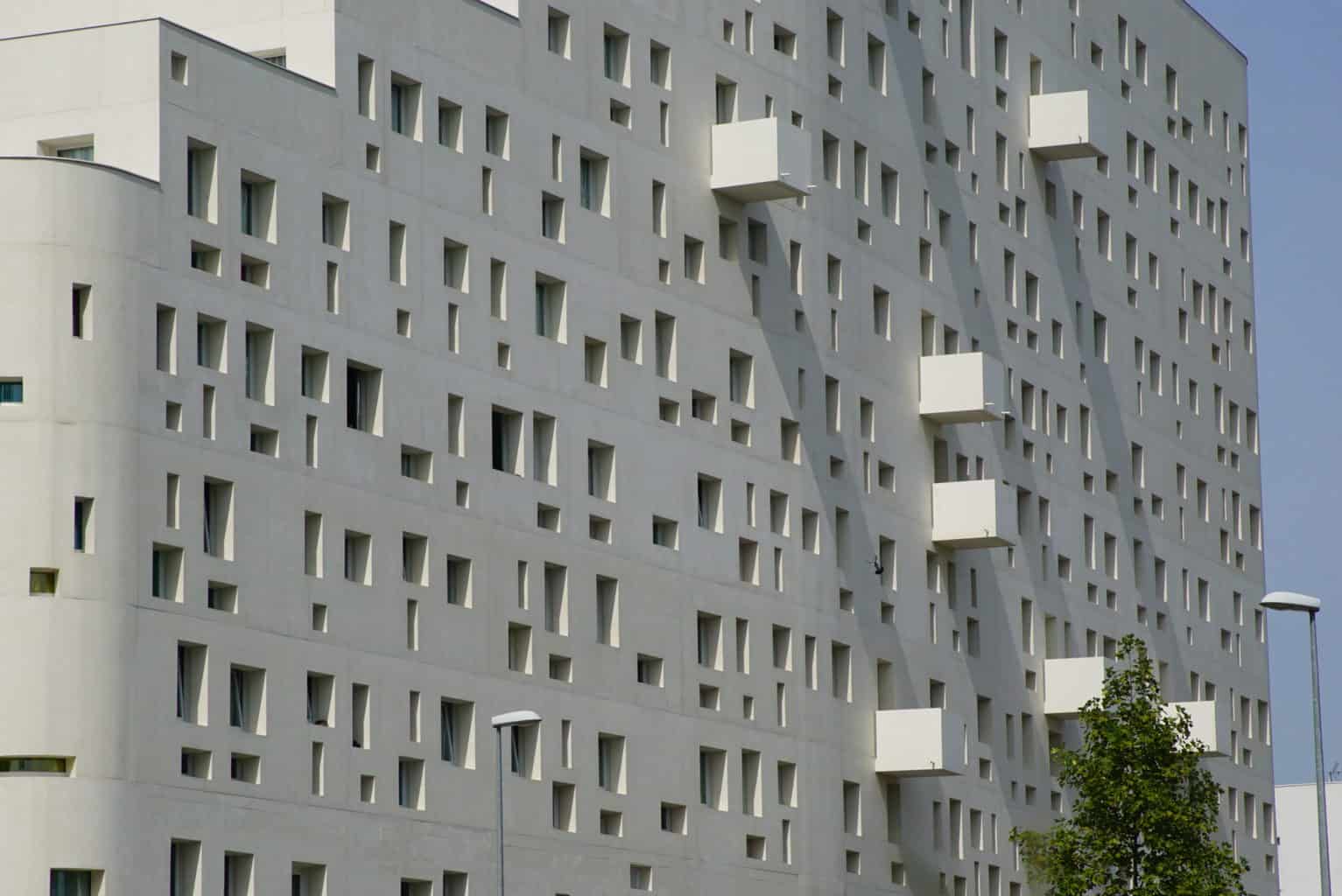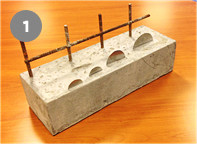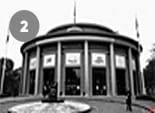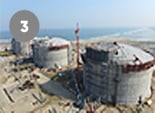
The secret to durable buildings: perfectly timed renovations!
4 minutes of reading
Every day, concrete endures attacks of all kinds (carbon dioxide from the air, chlorides, etc.). These aggressive substances corrode the concrete’s metal reinforcements and cause deterioration. Unavoidable? Yes. Disastrous? No – not if you know exactly when to do renovation work.

To make sure that a concrete building of any type (residential or industrial) stays in good condition, the key is to be able to predict the effects of weathering: renovation work can then be carried out on a more regular basis. The monitoring system of Bouygues Travaux Publics (subsidiary of Bouygues Construction) is designed to do just that. How does it work? Small metal rods are embedded in the concrete, at different depths: they will corrode as the aggressive substances eat into the structure. “These rods have the same properties as rebars in reinforced concrete. They will therefore react to attacks in the same way,” explains Christian Cremona, Technical Director of Civil Engineering and Director of Materials and Structures R&D at Bouygues Construction.
Goal: to estimate the time remaining before corrosion occurs
Different structures have varying distances between rebars and the concrete’s “skin”. “By embedding rods at one-centimetre intervals (photo n ° 1), we can measure how far the aggressive substances have penetrated the concrete and thus estimate the time remaining before the corrosion process begins to affect the actual reinforcement. This knowledge enables us to plan renovation strategies and then carry them out without urgency, while minimising the danger of excessive deterioration. ” Once renovation work has been carried out, new metal blades are installed, enabling us to monitor the durability of the work. “This is an excellent way to reassure building owners about the durability of their works“, says Christian Cremona.
 A system that’s simple, reliable and durable
“In practice, concrete is heated by magnetic induction. The heat produced stimulates the free electrons in these rods. Once they are set in motion, these electrons heat the rods. At this point, they can simply be observed using a thermal camera and the degree of corrosion calculated according to their brightness and return to thermal equilibrium. Unlike wireless sensors, the rods are maintenance-free since no electronics are involved. A rod retains its use right up until it becomes corroded! “, explains the Technical Director of Civil Engineering and Director of Materials and Structures R&D at Bouygues Construction. A fast, convenient system that’s also economical! “The only purchase costs are induction heating and the thermal camera. These are tools that can, in any case, be used for other uses and on other works. “
An advantageous system for new and old builds
The so-called “orphan” metal rod system has been in use since 2016, as part of a large-scale research program carried out in partnership with the Cercle des Partenaires du Patrimoine. It has been implemented on a number of projects, such as the renovation of Palais Jena, built in 1937 by architect Auguste Perret in the 16th arrondissement of Paris (photo n ° 2).
A system that’s simple, reliable and durable
“In practice, concrete is heated by magnetic induction. The heat produced stimulates the free electrons in these rods. Once they are set in motion, these electrons heat the rods. At this point, they can simply be observed using a thermal camera and the degree of corrosion calculated according to their brightness and return to thermal equilibrium. Unlike wireless sensors, the rods are maintenance-free since no electronics are involved. A rod retains its use right up until it becomes corroded! “, explains the Technical Director of Civil Engineering and Director of Materials and Structures R&D at Bouygues Construction. A fast, convenient system that’s also economical! “The only purchase costs are induction heating and the thermal camera. These are tools that can, in any case, be used for other uses and on other works. “
An advantageous system for new and old builds
The so-called “orphan” metal rod system has been in use since 2016, as part of a large-scale research program carried out in partnership with the Cercle des Partenaires du Patrimoine. It has been implemented on a number of projects, such as the renovation of Palais Jena, built in 1937 by architect Auguste Perret in the 16th arrondissement of Paris (photo n ° 2).
 “Rods have been installed in the renovated sections. They allow us to monitor the structure’s new rate of ageing and to plan additional work if necessary, thus enhancing the building’s durability,” explains Christian Cremona.
The metal rods have also been used in the construction of gas tanks in Dunkirk (photo n ° 3). “In new buildings, all you have to do is set the rods before pouring the concrete. This presents many advantages for customers at minimal cost. That’s why we are now offering to install this system on all our concrete constructions. It allows us to accurately monitor the rate at which buildings are ageing, a process that largely depends on their degree of exposure. “
“Rods have been installed in the renovated sections. They allow us to monitor the structure’s new rate of ageing and to plan additional work if necessary, thus enhancing the building’s durability,” explains Christian Cremona.
The metal rods have also been used in the construction of gas tanks in Dunkirk (photo n ° 3). “In new buildings, all you have to do is set the rods before pouring the concrete. This presents many advantages for customers at minimal cost. That’s why we are now offering to install this system on all our concrete constructions. It allows us to accurately monitor the rate at which buildings are ageing, a process that largely depends on their degree of exposure. “


Rods installed on frame

Iena Palace

Dunkerque LNG
More reading
Read also




What lies ahead? 7 megatrends and their influence on construction, real estate and urban development
Article
20 minutes of reading

